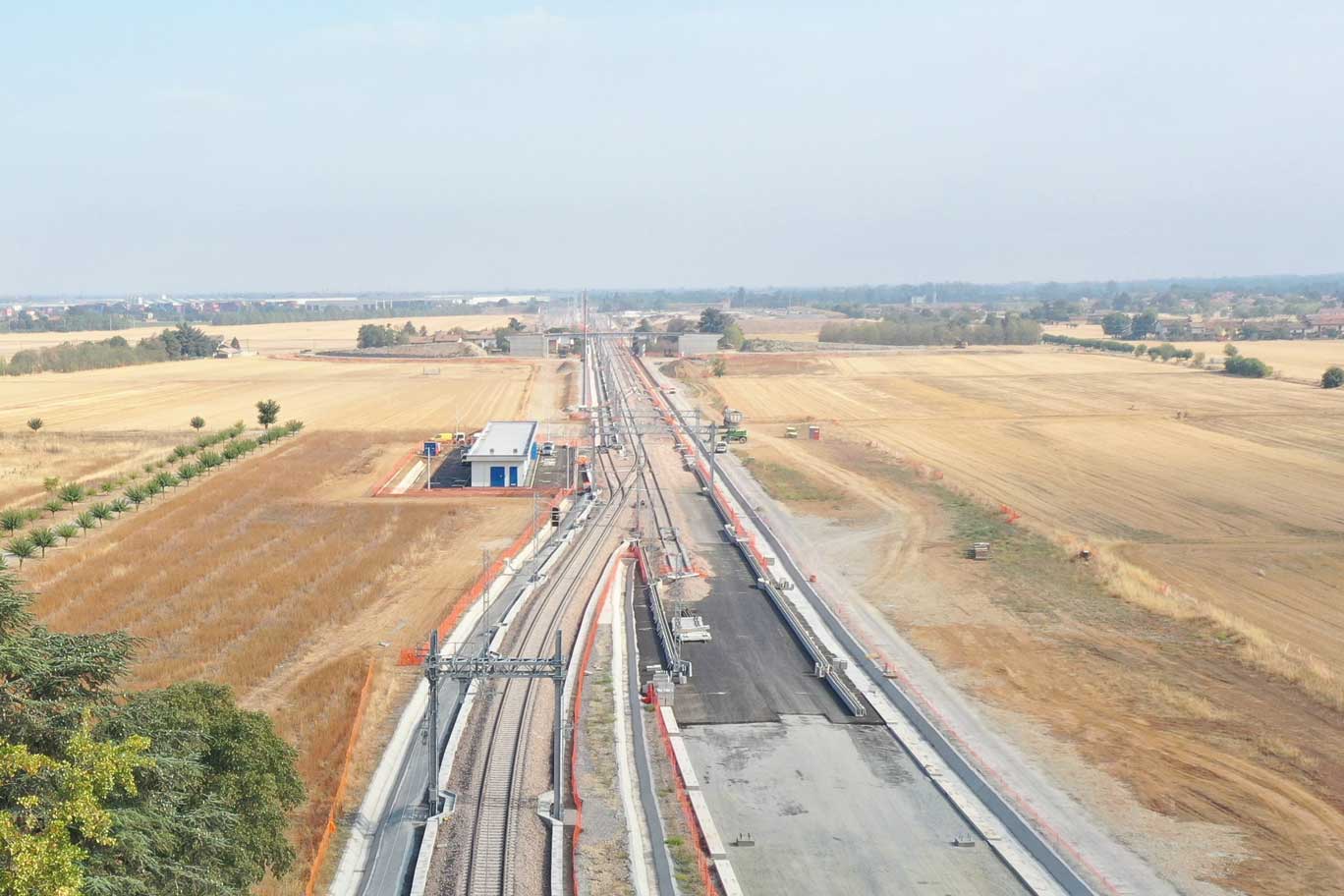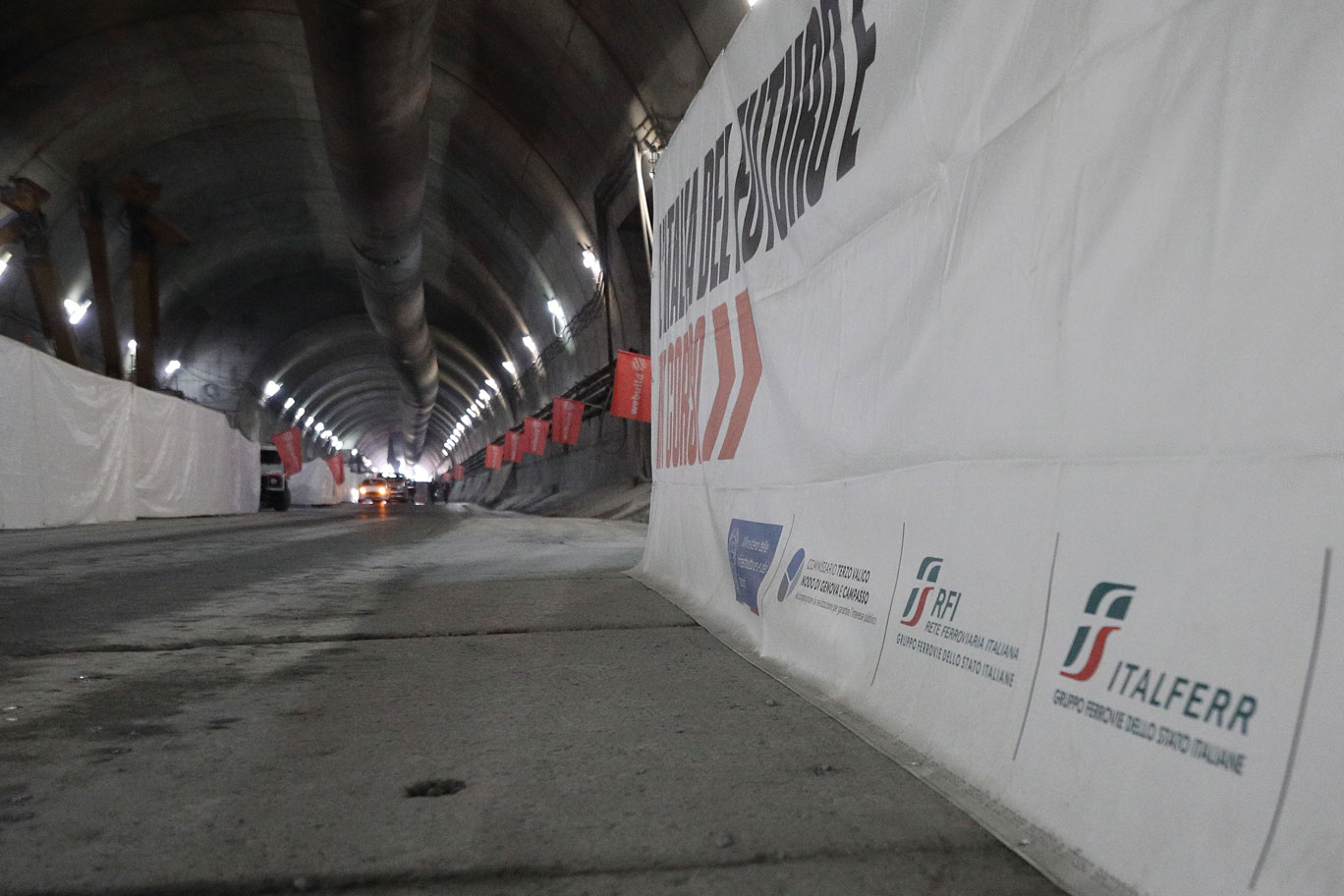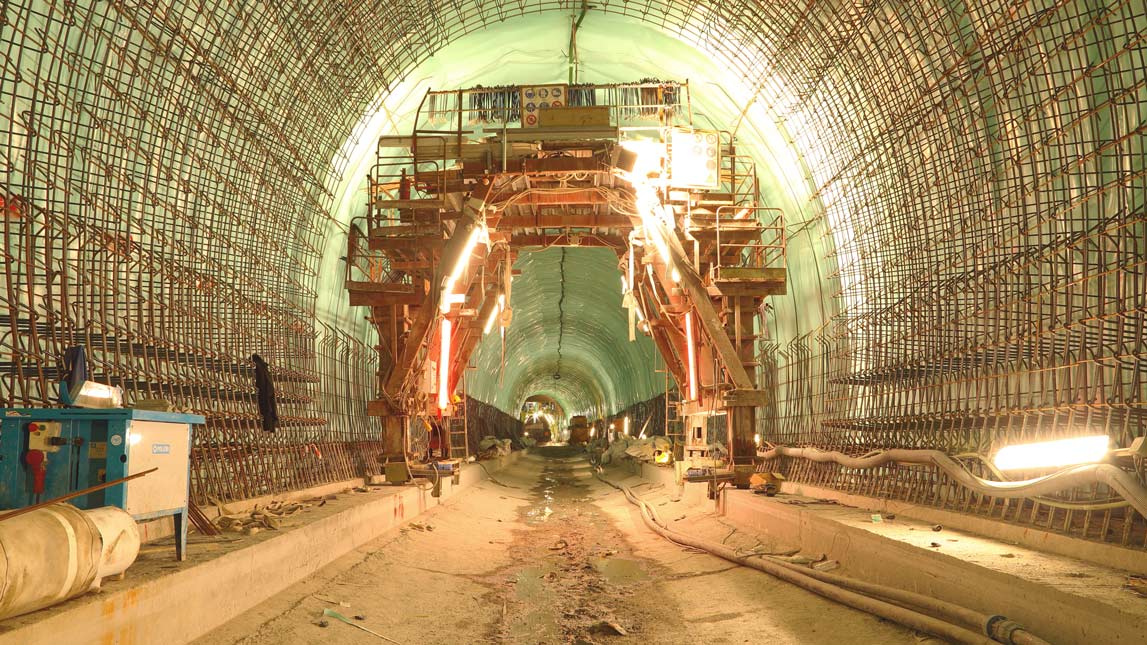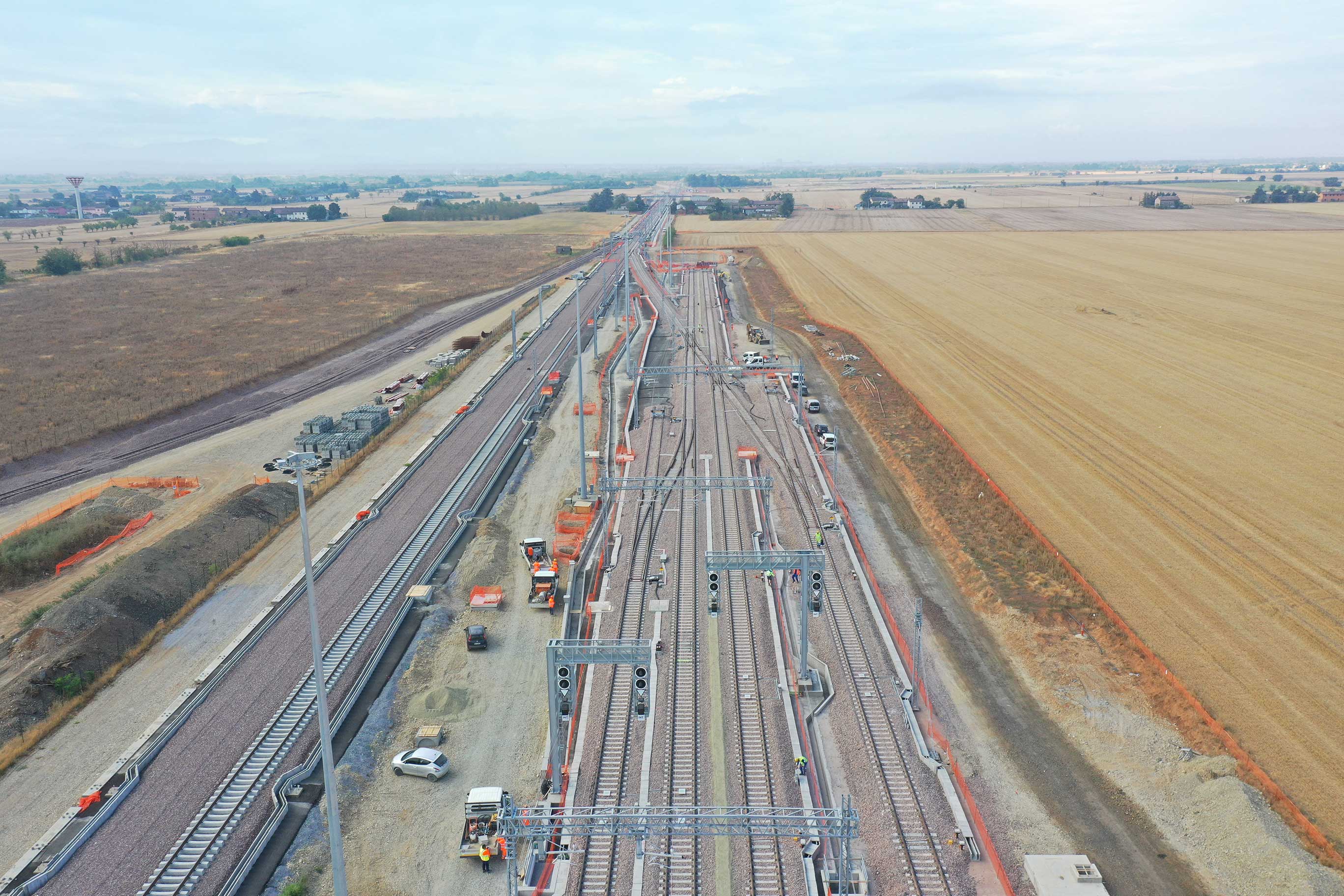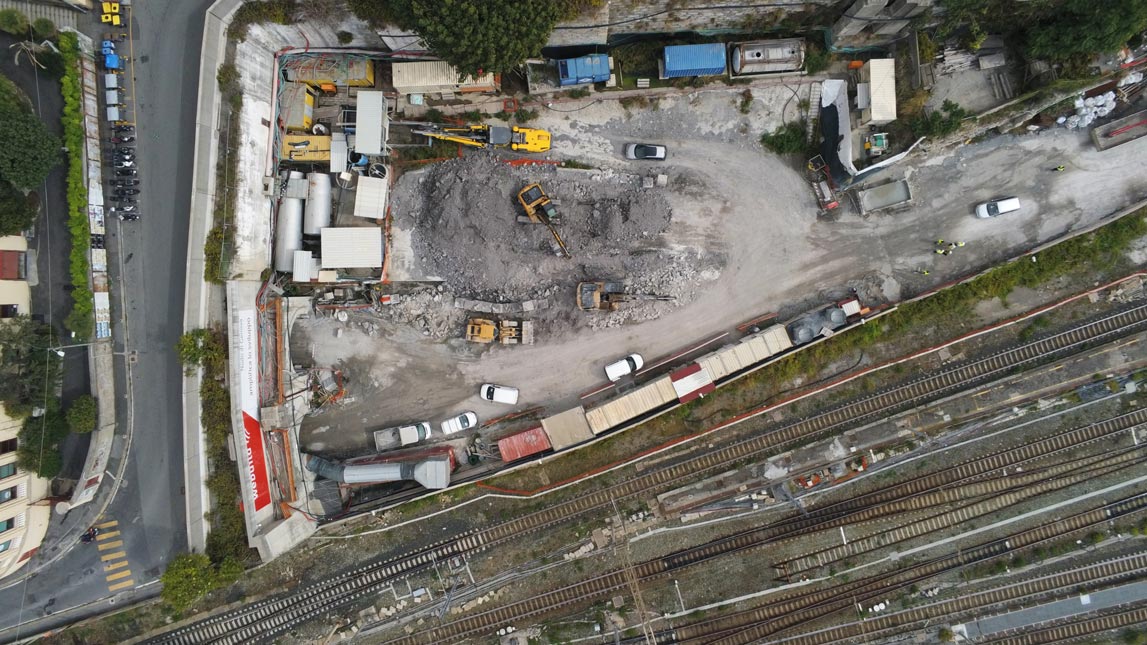The new Terzo Valico line is primarily aimed at improving the connections of the Ligurian port system with the main railway lines in northern Italy and with the rest of Europe, in line with the strategies announced in the EU’s Transport White Paper – to transfer 30% of freight traffic or over 300 kilometres – from road to rail by 2030 and 50% by 2050, with benefits for the environment, safety and the economy.
As a fundamental part of the TEN-T Rhine-Alps Core Corridor – the most important European north-south axis along which the largest volume of goods transported in Europe moves, crossing the countries with the greatest industrial vocation (the Netherlands, Belgium, Germany, Switzerland and Italy), the Mediterranean with the North Sea, and the ports of the Upper Tyrrhenian Sea with those of northern Europe – the Terzo Valico shall render it possible to overcome the current obstacles to the development of rail transport between Genoa, Milan and Turin.
Indeed, the two existing railway lines have technical characteristics that are not up to European standards, limiting the possibility of running large and heavy freight trains between the port of Genoa and northern Europe. These are lines with effective characteristics directly related to the construction standards of the time in which they were built – the “Linea dei Giovi”, completed in the mid-19th century, has a gradient of 35 per thousand, greatly winding and used exclusively by local passenger traffic and to a lesser extent by freight traffic. The “Succursale dei Giovi” line, completed in the early 20th century, has a gradient of 17 per thousand and is also used by long-distance passenger traffic.
Thanks to its technical characteristics, in particular the slope and gauge (width) of the tunnels, being much higher than those of the existing lines, the new high-capacity line will allow the transit of trucks on freight trains (Rolling Highway) and High Cube containers. In parallel, by also allowing the passage of long-distance passenger trains, the Terzo Valico integrated with the Genoa Junction will reduce travel time between Genoa and Milan and between Genoa and Turin.
The project has received partial public funding, including NRRP funds.
Calogero Mauceri was appointed Extraordinary Governmental Commissioner for completion of the works.
The Track
53 kilometres in length, 70% of which is in tunnels, the new line involves 14 municipalities in the provinces of Genoa and Alessandria and is connected to the south – via the Voltri interconnection and the Bivio Fegino – with the railway facilities of the Genoa Junction as well as with the port basins of Voltri and Porto Storico in Genoa and, from the Novi Ligure plain, to the existing Genoa-Turin lines (for traffic streams in the direction of Turin and Novara-Simplon) and to the Tortona-Piacenza line (for traffic streams in the direction of Milan-Gotthard).
Starting from the Bivio Fegino and up to the Piana di Novi, with the exception of a short open-air stretch in the municipality of Arquata Scrivia and in correspondence with Libarna, the new line unfurls within three natural tunnels (Galleria di Valico, Galleria Serravalle and Galleria Campasso) to then run out in the open up to the artificial tunnel of Pozzolo before extending once more in the open until joining the existing Pozzolo–Tortona line (the itinerary for Milan). Within the Serravalle Gallery, the Novi Ligure interconnections branch off to form the connection to and from Turin along the current Genoa-Turin line. On the Genoa side, the Voltri interconnections then branch off within the Valico tunnel, allowing a direct connection of the Terzo Valico with the Bretella di Voltri (beltway) and thus with the port of Voltri and the Genoa-Ventimiglia line.
At approximately 27 kilometres in length, the Galleria di Valico has four intermediate access windows for both construction and safety purposes. In line with the most advanced safety standards, most of the sections of the tunnel shall be constructed in two single-track tunnels side-by-side and joined by cross-connections every 500 metres so that each can serve as a safety tunnel for the other.
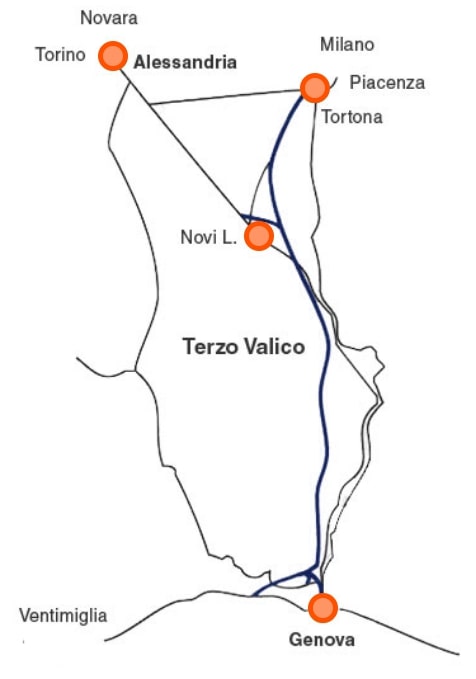
Operations on the Genoa Junction
With Law 55/19 – the Unblocking Construction Sites Decree – works on the Genoa Junction pertaining to the Voltri-Brignole infrastructural upgrade and the last mile between the Terzo Valico and the Port of Genoa have been unified with the Terzo Valico into a Consolidated Project.
Implementation of the works on the Junction shall allow an increase in the capacity of the lines afferent to the Genoa Junction, with a potential consequent rise in the frequency of trains, through the separation of regional and metropolitan trains from long-distance and freight trains, along with the connection between the last mile of the Terzo Valico dei Giovi and the Port of Prà-Voltri and the historic port of Genoa.
The Voltri-Brignole infrastructure enhancement project consists in two main macro interventions: the “Sextuplication” and “Quadruplication”. In particular, the "Sestuplicamento" of the Principe-Brignole section envisages the extension of the existing C. Colombo and S. Tomaso tunnels to create a new Genova Principe-Genova Brignole route dedicated exclusively to metropolitan-regional traffic.
The “Quadrupling” of the Genua Voltri-Genua Sampierdarena section, rather, counts four tracks – two of which are for metropolitan and regional traffic along the current route of the coastal line and two for long-distance trains (freight and passengers), achieved with the completion of the Bretella di Voltri and its entry near the Sampierdarena station. This will also facilitate a direct connection to the Terzo Valico dei Giovi for incoming or outgoing freight at the Port of Prà Voltri.

